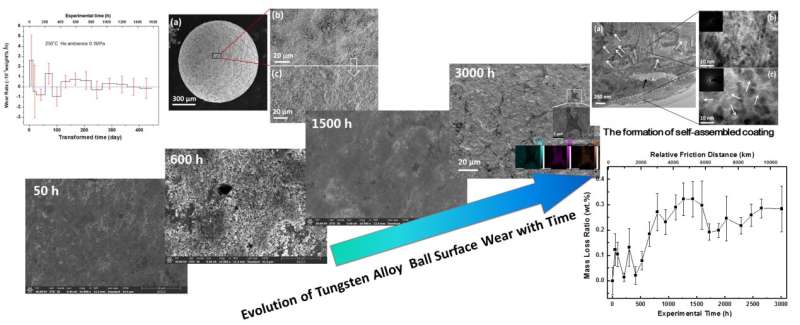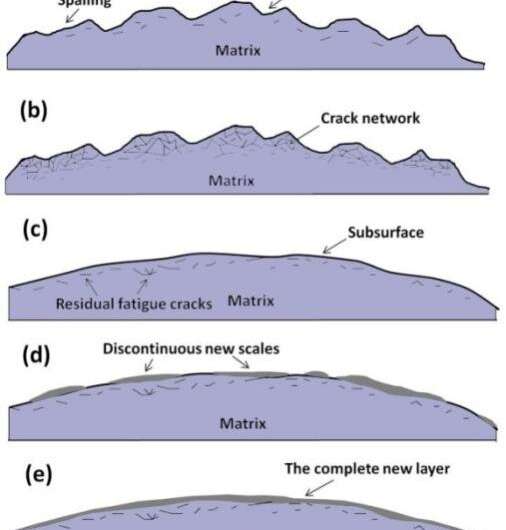Fig. 1. The wear evolution process of tungsten alloy balls during collective motion. Credit: PANG Lilong
Researchers at the Institute of Modern Physics (IMP) of the Chinese Academy of Sciences (CAS) have recently revealed the collective friction and wear behavior of tungsten alloy balls, the important candidate target material for the Accelerator Driven Subcritical System (ADS). Results were published in Tribology International.
The new granular flow spallation target is considered as one of the most promising candidate target types for ADS. The spallation target will work under extreme conditions such as high temperature and strong radiation. Additionally, numerous target balls circulating in the target loop will cause strong and complex friction and wear, which affects the service life of the target balls. So far, no suitable method has been proposed to evaluate the friction and wear behavior caused by the granular collective movement.
With excellent properties and low cost, the tungsten alloy balls are considered as one of the important candidates for the granular flow spallation target. By using the self-developed device, the researchers at IMP conducted the collective wear experiment of the tungsten alloy balls at 250 ℃.
They found that the mass loss ratio of the target balls increased firstly and then decreased, with a maximum of about 0.32 wt%, and finally reached a steady-state of about 0.28 wt.%.
The whole process can be divided into several stages, which correspond to different friction and wear behaviors. In the initial stage, fatigue wear is dominant, and then the micro-crack network on the surface of the ball begins to sprout and develops into a crushed layer. After the crushed layer falls off, the sub-surface begins to wear. Finally, a self-assembled new layer with a structure of amorphous surrounding nanocrystallines is formed on the ball surface.
Fig. 2. Schematic illustration process of wear and the formation of a new layer on the surface of the tungsten alloy ball. Credit: PANG Lilong
According to the researchers, as it has greater tolerance for friction defects and can inhibit the propagation of micro-cracks, this new layer is useful for improving the wear resistance of the ball surface.
Moreover, the results also reveal the important role of wear debris. In the early stage, it contributes to the formation of top crushed layer. In the middle stage, it acts as the solid lubricant and buffer layer between the spheres, slowing down the friction and wear. And in the later stage, it participates in the formation of self-assembled layer to protect the ball.
The results not only provide a crucial experimental method for evaluation of friction and wear behavior of the granular spallation target, but also provide evaluation data of service life of tungsten alloy balls as spallation target material from the perspective of tribology.
More information: Lilong Pang et al, Study on collective friction and wear behavior of W-Ni-Fe alloy balls, Tribology International (2021). DOI: 10.1016/j.triboint.2021.107232
Provided by Chinese Academy of Sciences

























